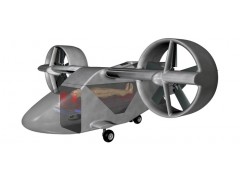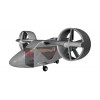Piasecki Aircraft Corp. and Carnegie Mellon University have developed and flight demonstrated a navigation/sensor system that enables full-size, autonomous helicopters to fly at low altitude while avoiding obstacles; evaluate and selec suitable landing sites in unmapped terrain; and land safely using a self-generated approach path.
Autonomous flight at low altitude and landing zone evaluation/selection is an unprecedented feat with a full-size helicopter. This technology has been developed to allow future unmanned helicopters to evacuate wounded soldiers fro contaminated or live-fire battlefields and to resupply forward military bases. The technology is also applicable as a pilot aid to help both military and civilian pilots avoid obstacles, such as power lines, and selec landing sites in unimproved areas such as emergency scenes, even when operating in low-light or low-visibility conditions.
In mid-June 2010, the Piasecki/Carnegie Mellon team flight tested the navigation/sensor system at The Boeing Company’s Rotorcraft Systems facility in Mesa, AZ, using the Unmanned Little Bird helicopter test bed. The Piasecki/Carnegie Mellon sensor package and navigation, mapping and collision avoidance software repeatedly demonstrated the ability to land in cluttered environments. In each case, the navigation/sensor system had to map an unknown area wher large and small obstructions limited the possible landing sites, circumstances typical of a military or civilian medical evacuation mission. The system was able to reliably identify level landing sites with clear approach paths that were accessible for evacuating a simulated casualty.





